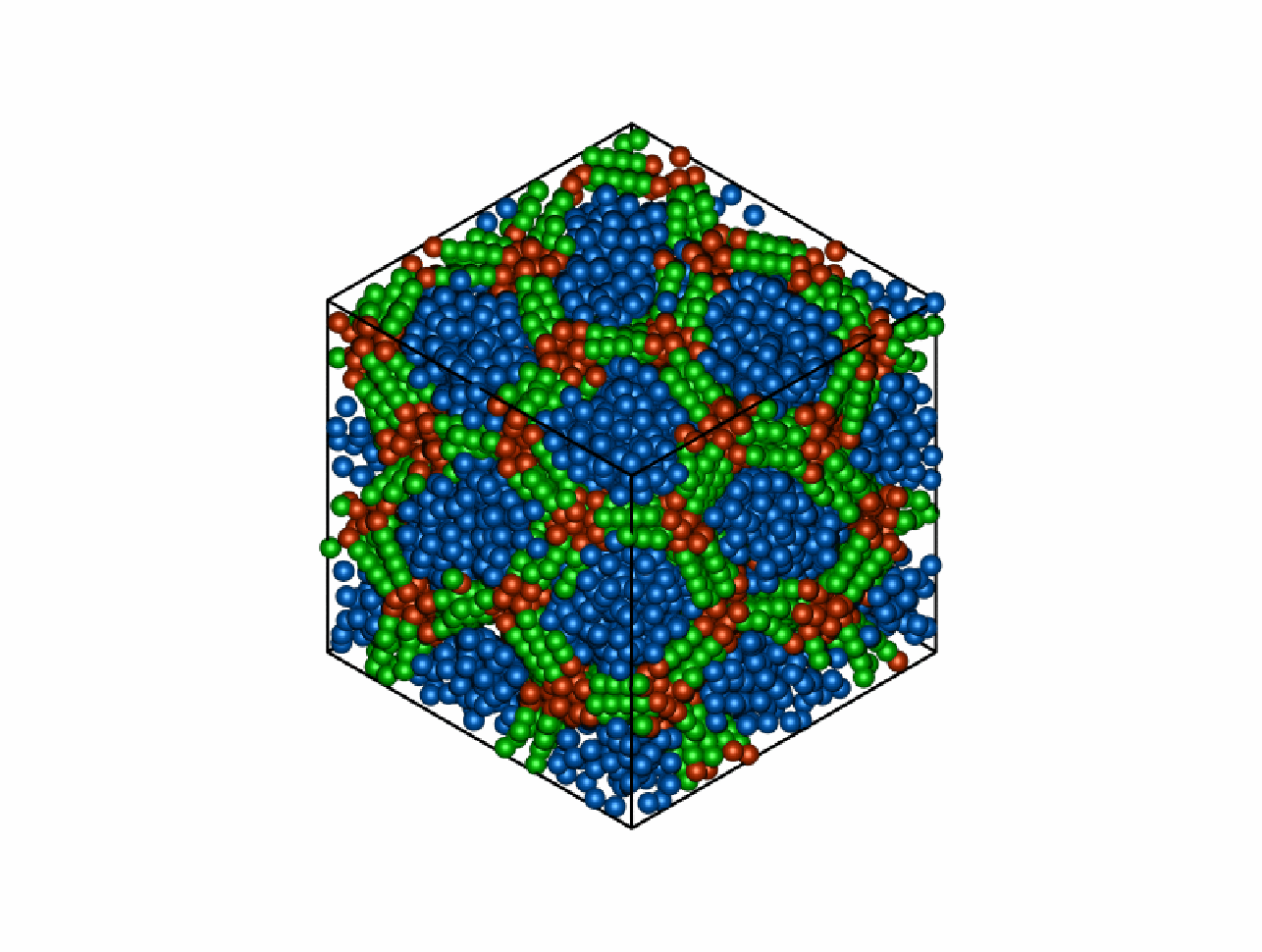470e Molecular Dynamics Simulation of the Mesophase Behavior of a Model Bolaamphiphilic Liquid Crystal with a Lateral Flexible Chain
We present coarse-grained simulations of a model of a bolaamphiphile liquid crystal molecule with a grafted flexible side chain. The coarse-graining approach employed is based on minimising the attractions present in the system, on the premise that the most important features of the liquid structure stem from the balance between the close range repulsions and the strong directional forces typical of hydrogen bonding and association. The model consists of six fused rigid spheres, where the two end spheres have a significant attraction amongst themselves while the rest are repulsive in nature. A weakly self-attracting lateral chain consisting of fully flexible tangently bonded spheres is attached to one of the central spheres. A parametric study is made of the configurations of collectives of these molecules at temperatures that span from the isotropic fluid range down to the onset of crystallisation. The underlying rigid core molecules (with no side chain) are set up to exhibit a smectic liquid crystal behaviour. Upon increasing the number of spheres in the lateral chains from 1 to 12, the liquid regions exhibit a rich variety of self-assembled structures; for small number of lateral spheres columnar arrays of different cross sections (triangular, square, rectangular, hexagonal) are obtained and for the longer chains lamellar structures of different interlayer spacing are observed. We showcase and give a rational physical explanation for the global phase behaviour of the model, based on pertinent order parameters and apparent diffusivities of the several regimes encountered. Although no attempt has been made to fit the parameters of the model to real molecules, the model is inspired in the reported synthesis of a family of T-shaped polyphilic molecules (C. Tschierske, Chem. Soc. Rev., 2007, 36, 1930-1970) where some of the above mentioned phases have been inferred from experimental measurements.
